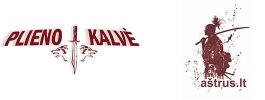Roe deer hunting season

Hunting is one of the oldest human activities, which began not only as a source of food, but also as a way to sustain the human population. Today, hunting remains not only a traditional activity, but also a way to control wildlife and maintain ecosystem balance. One aspect of hunting is hunting seasons, which are regulated by state authorities to preserve wildlife and ensure sustainable exploitation of nature.
What is roe deer hunting season?
Roe deer hunting season is the period when it is allowed to hunt roe deer, a medium-sized wild animal that belongs to the deer family. This period may vary depending on the region, state laws and conservation objectives. Generally, during the hunting season, the possibility of deer hunting is limited, limits are set on the number of animals caught or shot, and special requirements for hunting methods and equipment are applied.
Challenges of naturalists during the roe-deer hunting season
Hunting season presents many challenges for naturalists and wildlife conservation enthusiasts. These challenges include:
1. Protection against population decline
Roe deer population can be affected by over-hunting, which can reduce their numbers and destabilize the ecosystem. It is therefore important to set adequate limits and regulate hunting intensity to avoid excessive damage to the population.
2. Influence of seasonal migration
The deer hunting season can coincide with their seasonal migration. This can present challenges for hunters who must monitor and understand this migratory phenomenon in order to plan their hunts effectively.
3. Accommodation problems
Hunting season can lead to large concentrations of hunters in certain areas, which can have a negative impact on wildlife and animal habitats. It is necessary to ensure that the hunting season does not cause too much damage to ecosystems.
The importance of accommodation during the roe-deer hunting season
Lodging is one of the most important aspects of the hunting season. These include the management of suitable hunting grounds, human safety and education, and sustainable hunting.
1. Territory management
Proper management of hunting areas is necessary to preserve wildlife and ensure sustainable hunting. This includes monitoring the state of ecosystems, identifying migration routes and nature reserve areas.
2. Human safety and education
Hunting season can attract large numbers of hunters and nature watchers. It is important to ensure their safety and provide proper information about hunting rules and etiquette. This will help prevent accidents and unintended consequences for nature.
3. Sustainable hunting
During the deer hunting season, it is necessary to follow the principles of sustainable hunting. This includes regulating the number of animals hunted, conserving resources and choosing hunting methods in a way that minimally disturbs the balance of ecosystems.
Conclusions
The roe deer hunting season is an important aspect for naturalists and wildlife conservation enthusiasts. In order to preserve animal populations, ensure sustainable hunting and safety for hunters and nature watchers, it is necessary to properly regulate the hunting season, manage territories and provide education. This will help maintain the balance of ecosystems and ensure that these old activities are sustainable and responsible activities in the future.




